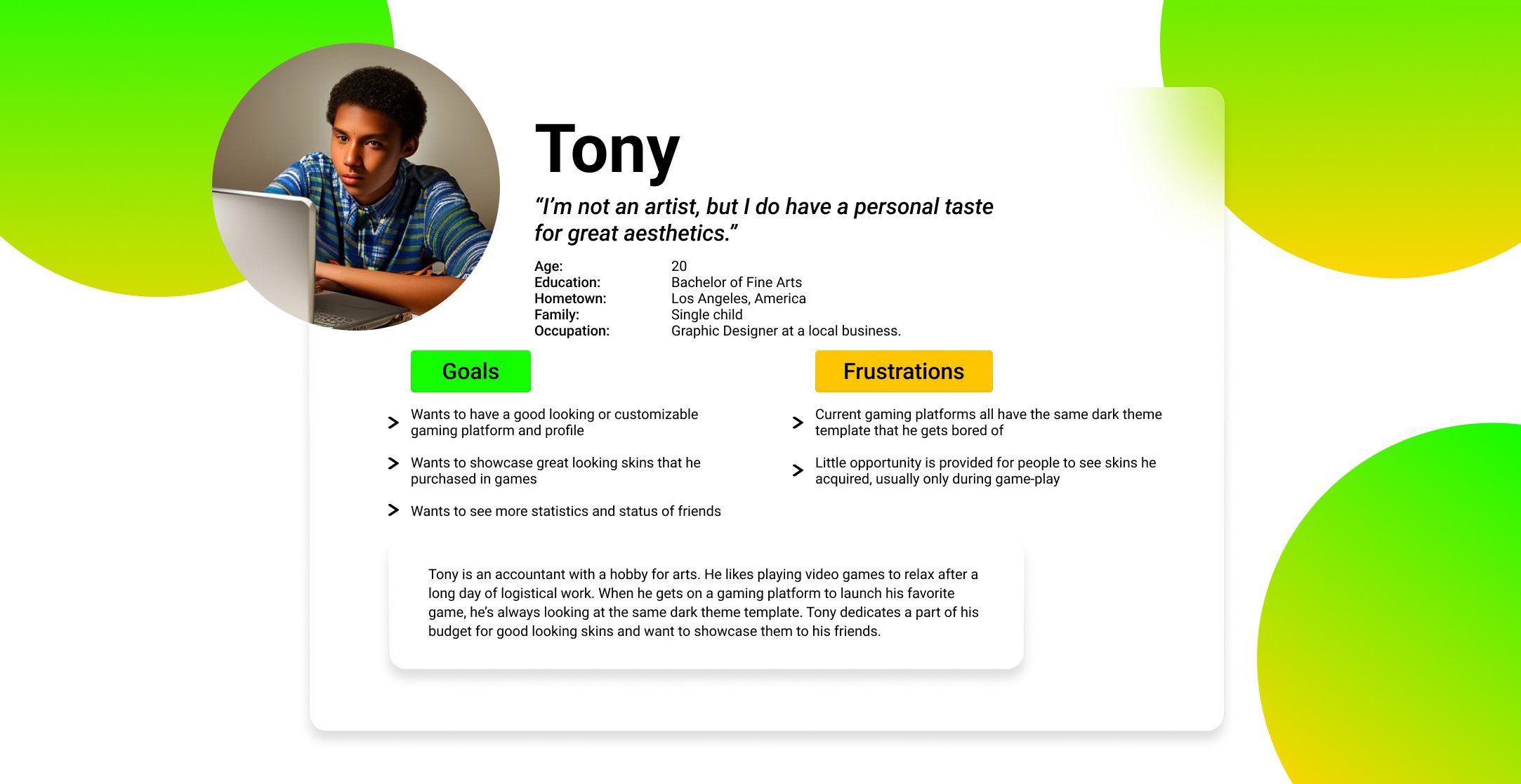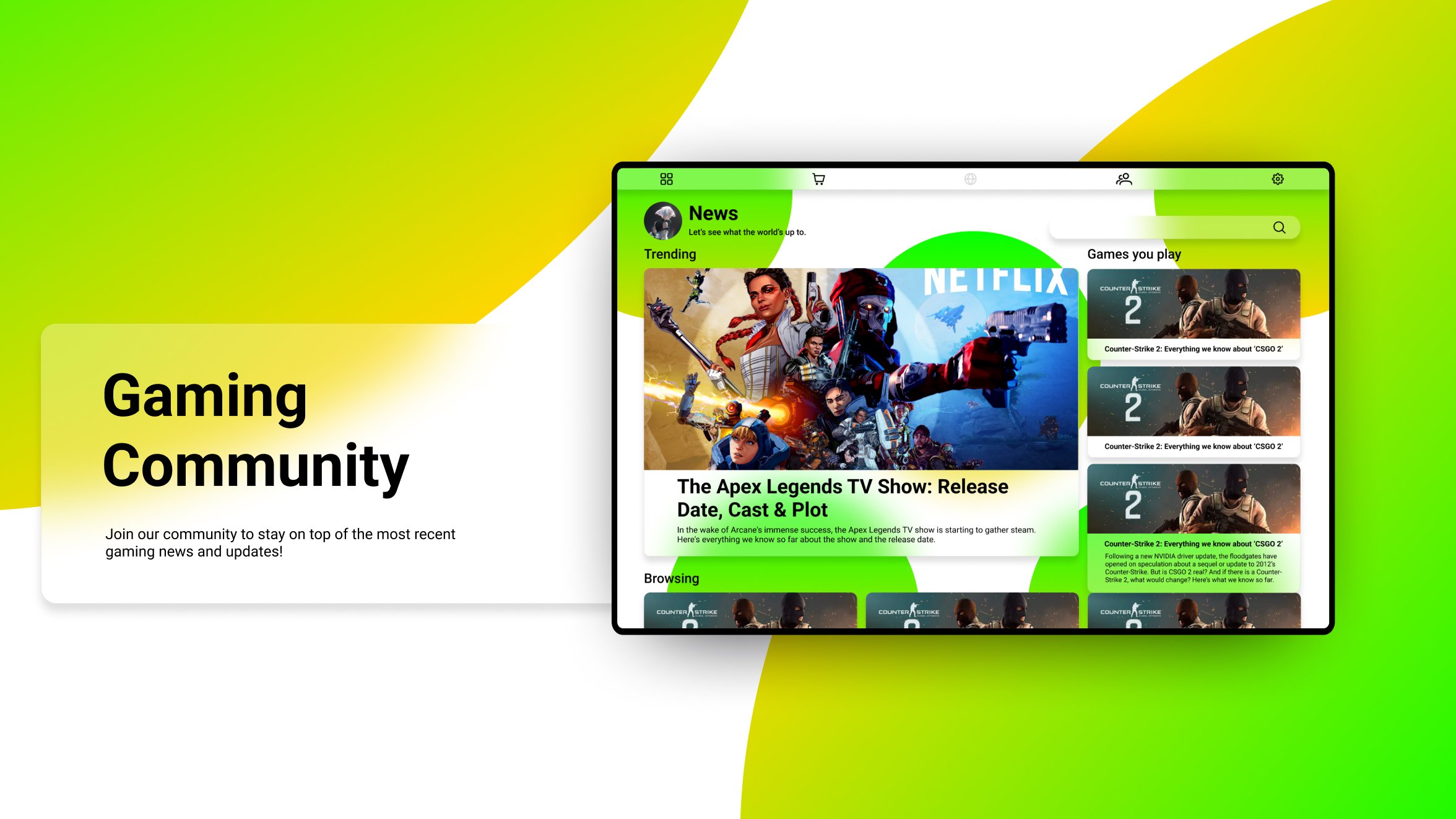
U-Engine, an inclusive, customizable, and responsive gaming platform.
Role: One-man project
Timeline: 3 weeks
Platform: Desktop Application
Read Time: 13 mins
OVERVIEW
U-Engine is a gaming platform designed to be universal, inclusive, and responsive. Compared to other game platforms, it has new community features and allows for more customization for users with high digital literacy, and its functions are organized more intuitively for users coming online for the first time. U-Engine takes an universal and accessible approach on the design to invite a wide range of audience with or without disabilities.
KEY CHALLENGES & CONSTRAINTS
This project is for my final year’s thesis project, and I spent the majority of the semester making an installation before realizing my passion lies and switching ideas.
Designing a prototype quickly poses challenges like prioritizing key features, limited testing, and ensuring a user-friendly experience. Time constraints may result in incomplete design elements and minimal user feedback, while balancing complex features and resource allocation can impact the overall quality and effectiveness of the prototype.
THE PROBLEM
Users are seeking more customization options for the appearance of their browser, as current gaming platforms are overly complex and lack accessible features. Additionally, there is a gap in providing tools for communities playing the same games to easily connect and engage with each other. This limits both personalization and social interaction, reducing the overall gaming experience.
THE GOAL
Our new accessible and customizable gaming platform will let users personalize their gaming experience, easily connect with friends and communities, and stay updated on game-related content, which will affect all gamers by enhancing engagement and simplifying interactions. We will measure effectiveness by tracking user retention, engagement rates, and user feedback on the customization options and community features.
Research & Personas
COMPETITVE AUDIT
Key Takeaways:
Apple App Store and Google Play dominate the mobile gaming market, offering vast libraries but lack strong community and customization features.
Steam excels in community engagement, offering extensive tools for interaction but can feel cluttered and overwhelming for new users.
Epic Games focuses on exclusive titles and ease of use but lacks depth in social connectivity and community features.
There is a clear opportunity for improving community interaction, discoverability, and customization across platforms, especially on mobile-focused platforms like Apple and Google.
TARGET AUDIENCE
The target audience for U-Engine can be categorized into 4 main traits:
Casual Gamers: Gamers who play occasionally but want a personalized, user-friendly experience without complicated interfaces.
Hardcore and Competitive Gamers: Players deeply invested in gaming who seek real-time updates on game news, patches, and esports events.
Social & Collaborative Gamers: Players who thrive on social interaction within games, enjoying the chance to form or join gaming communities.
Accessibility-Conscious Gamers: Gamers with varying needs for accessibility (physical, cognitive, or sensory) will benefit from a platform that emphasizes accessibility features.



User Testing
KEY FINDINGS AND CHANGES
Overcomplicated Customization User flow:
The customization process had excessive steps and poor information hierarchy, making it difficult to navigate.
Change: Simplified the customization flow interface and real-time previews to enhance usability and efficiency.
Ineffective Community Interaction Design:
Users struggled with discoverability and engagement within the community section.
Change: Introduced a centralized community hub with improved information architecture, including filters and a messaging system to streamline user engagement.
Inability to View Friends' Gaming Status:
Users could not see their friends' current gaming activities, which limited social engagement.
Change: Added a friend status visibility feature, allowing users to see what games their friends are currently playing, enhancing social presence and real-time interaction.
Lack of Personalized Content Curation:
The recommendation system was generic and lacked contextual relevance to individual user preferences.
Change: Implemented a personalized recommendation, improving content discoverability through machine learning-based predictive design.
Final Design
*
Final Design *





Conclusion
The development of this prototype provided key learnings around the importance of streamlined customization, intuitive navigation, and social connectivity for enhancing user experience. We identified the need for responsive design and real-time updates to keep users engaged and informed. The feedback emphasized the value of personalized content and easy community interaction.
Next Steps: We will focus on refining the notification system, improving friend status visibility, and expanding cross-platform functionality. Further usability testing will ensure these changes effectively meet user needs, guiding future iterations of the platform.
